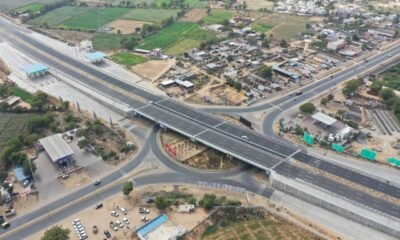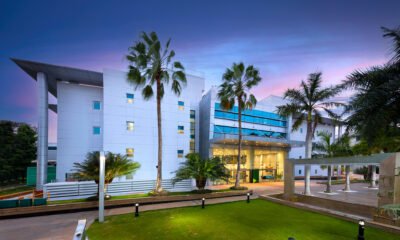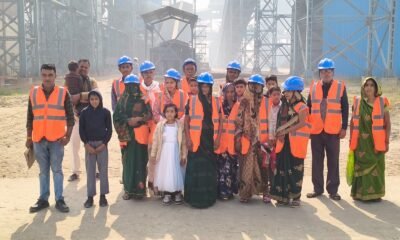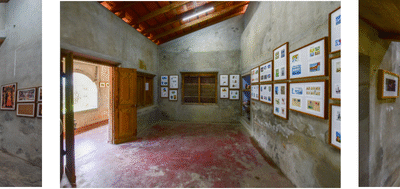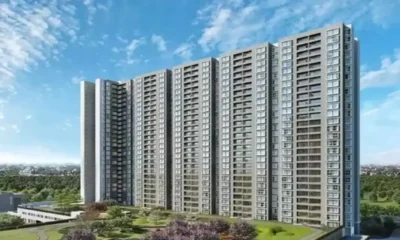Guest Column
From Transit Hubs to Community Spaces: The New Heart of Uttar Pradesh’s Cities

By Mohit Goel, MD, Omaxe
In the heart of north India, something big is happening. Uttar Pradesh is shaking off old stereotypes of overcrowded cities and crumbling infrastructure, and replacing them with bold, deliberate change. All across the state, metros, flyovers and parks are cropping up, and these aren’t just development stats on a government portal as they are making people’s lives easier.
Metro Dreams Turning into Reality
Kanpur is a great example of how a city can start turning things around. For years, traffic was a nightmare, and public transport meant long, sweaty bus rides. But now, the Metro’s in place and people are actually using it.
The Orange Line kicked off in 2021, and in April 2025, it went underground. A new seven-kilometre extension connected Chunniganj to Kanpur Central. That alone has made daily commuting a whole lot easier. With over 80 km of track now up and running, people are not just saving time; they are skipping the pollution-heavy, frustrating commute they used to dread.
In Lucknow, the metro has been around longer, and it’s quietly doing its job. You don’t really notice how much difference it’s made until you skip the traffic altogether. The metro in Agra is newer. It began in March 2024, but it’s already helping tourists and locals alike. Even better, there’s a small 10 per cent discount on fares if you use the National Common Mobility Card, which is a nice nudge to go digital.
Roads that Connect and Propel
It’s not just about Metros. The expressways crisscrossing Uttar Pradesh are making towns feel closer, businesses more connected. The Gorakhpur Link Expressway, opening this month, is 91 km long and costs over INR 7,200 crore. It’s meant to cut travel time to Lucknow down to just four hours. It sounds technical on paper, but what it really means is that more people can travel for work, for family or even just to explore.
The outer ring road in Lucknow, called Kisan Path, is another game-changer. And a massive eight-lane expressway is in the works between Lucknow and Kanpur. Together, they are starting to make it easier to live in the city without feeling stuck inside it.
Community Hubs Rising Along the Routes
There are now small buildings being set up in both rural and urban areas where people can access fair-price shops and government services under one roof. Around 5,500 of these are being built, which is honestly a big deal for villages that usually get left out of everything.
In Vrindavan, a religious place, the government is reworking the Banke Bihari corridor to manage crowds better. Around 275 families are being relocated as part of the plan, and instead of just pushing them out, the state is building 350 flats and offering space for shops. It’s not perfect, but it’s a more humane approach than we’ve seen before.
Digital Transparency with a Personal Touch
UP RERA is trying something new. Every approved housing project now gets a unique QR code. It might sound technical, but the idea is simple: buyers can scan it to check all the official details before signing anything. It’s meant to cut down on shady dealings and give people more control. With so many horror stories about delayed projects or missing paperwork, this little code could go a long way.
They are also working on cleaning up the real estate agent side of things. Agents have to get certified through official training programmes in Lucknow and Gautam Buddha Nagar. No training, no registration. It’s strict, but maybe that’s what the industry needs. According to UP RERA, over 6,700 agents are already registered, and this new requirement is pushing many of them to learn the rules properly.
The Change Feels Real on the Ground
This isn’t just top-down development anymore. People are noticing real, everyday changes. A student from IIT Kanpur no longer needs an hour in traffic to reach the city centre—he can hop on the metro and get there in under 25 minutes. A tourist in Agra can ride the metro from the railway station to the Taj Mahal without haggling with auto drivers.
This stuff isn’t just government talk anymore. People actually feel it in their commute, in the money they save, and in the new spaces opening up around them. Even in smaller towns, the effects are slowly trickling in. Those new Annapurna Bhawans are giving shopkeepers and farmers easier access to subsidised goods and digital services. That may not make headlines, but it changes lives.
A Blueprint That’s Starting to Work
Uttar Pradesh isn’t finished yet. If anything, it’s only just begun. The defence corridor projects, new power plants and housing schemes lined up for late 2025 all point toward a state that’s thinking big, but also learning to think better.
While it’s easy to be cynical about delay, poor maintenance and flashy promises, there’s also reason to feel cautiously hopeful. If this current pace holds, and if people continue to be kept at the centre of these plans, then maybe the new Uttar Pradesh really is around the corner.

 News2 weeks ago
News2 weeks agoInfrastructure Automation Company Enlite Launches World’s First Patented Edge Controller for Intelligent Infrastructure

 News1 day ago
News1 day agoTWH Hospitality Announces Aggressive F&B Expansion Plan with ₹30 Cr Investment

 News2 weeks ago
News2 weeks agoIshara Art Foundation to Present Group Exhibition ‘Amphibian Aesthetics’ at Ishara House in Kochi

 News2 weeks ago
News2 weeks agoGodrej Properties Crosses FY26 Annual Business Development Guidance with Acquisition of 75-acre land parcel in Nagpur

 News3 weeks ago
News3 weeks agoMumbai Returns to Pre-Pandemic Investment Levels, Surpasses $1 Billion 4th Consecutive Year: Cushman & Wakefield

 News3 weeks ago
News3 weeks agoGurugram Premium Segment Drives Projected Rs 6.65 Lakh Crore Market: ANAROCK

 News2 weeks ago
News2 weeks agoReal Estate Investment Momentum in APAC, India to Hold Steady Through 2026: Colliers’ Survey Insights

 News2 weeks ago
News2 weeks agoK2 Infragen Delivers Robust H1 with 76.5% Revenue Growth, 70% Profit Jump


